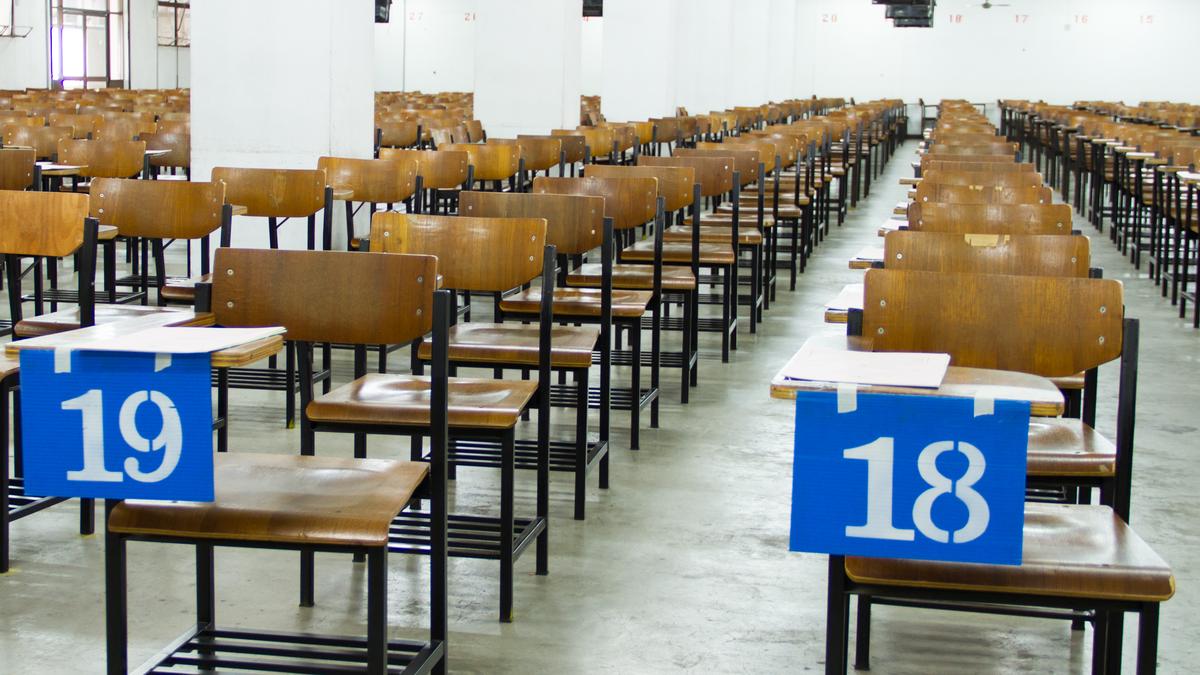Every year, nearly 70 lakh students in India compete for undergraduate seats appearing for entrance examinations such as the Joint Entrance Examination (JEE), National Eligibility cum Entrance Test (NEET), Common University Entrance Test (CUET), and Common Law Admission Test (CLAT). With a fixed number of seats, the competition is intense, fuelling a coaching industry and a culture of relentless pressure. Recent controversies such as branch closures and financial misconduct at a major JEE coaching centre, an Enforcement Directorate raid and student suicides highlight a broken system. It is time to rethink undergraduate admissions, prioritising fairness, equity and student well-being.
The coaching crisis and its toll
The scale of aspirants — 15 lakh for the JEE alone — has created a coaching empire, with centres charging a fee of ₹6 lakh-₹7 lakh for two-year programmes. Students as young as 14 years sacrifice holistic development for a gruelling routine of solving complex problems from books such as Irodov and Krotov, which go far beyond B.Tech requirements. This rat race breeds stress, depression and alienation, robbing teens of peer bonding and a normal adolescence. With some students unable to handle the pressure, some governments have enacted laws to regulate coaching centres. Yet, the root issue lies in an entrance examination system that overqualifies students and distorts merit.
Entrance examinations aim to filter 15 lakh aspirants for 18,000-plus seats in the Indian Institutes of Technology (IIT), but making a distinction between students scoring 91% or 97% in the Class 12 examination, or 99.9 percentile in JEE, is unreasonable. A decent Class 12 score, say, 70%-80% in physics, chemistry and mathematics, is sufficient for a B.Tech programme. The current system demands extraordinary performance due to the limited seats, vast applicant numbers, and disparities in college academic quality, creating a false hierarchy with an overemphasis on minor score differences. This sidelines capable students, favours those who can afford coaching, and exacerbates urban-rural, gender, and regional imbalances.
The consequences are severe. Psychologically, students face immense pressure. Socially, the system privileges wealthier families who can afford top-tier coaching, creating an illusory meritocracy. As Harvard philosopher Michael Sandel argues, this fuels a toxic obsession with perceived individual superiority, ignoring the role of luck and privilege. Sandel even suggests lotteries for admissions at elite institutions such as Stanford and Harvard to address these flaws.
The Dutch lottery and beyond
India can draw inspiration from global models. The Netherlands uses a weighted lottery for medical school admissions, introduced in 1972 and reinstated in 2023. Applicants meeting a minimum academic threshold enter a lottery, with higher grades improving odds. This reduces bias, promotes diversity, and eases pressure, recognising that overly precise metrics are often irrelevant, unfair and costly. Outcomes show that lotteries are viable when capacity is limited, aligning with Sandel’s critique of meritocratic excess.
In China, the 2021 “double reduction” policy banned for-profit tutoring for school subjects, nationalising coaching overnight to reduce financial burdens, address inequalities and protect student well-being. This tackled issues that India faces — unchecked, excessive and disorderly growth of coaching centres and their impact on youth.
The solution lies in simplifying admissions, trusting the school system and shielding students from an excessive number of examinations. The Class 12 board examinations, with their rigorous curriculum, are adequate to gauge B.Tech readiness. Instead of entrance examinations, a threshold, say, 80% in physics, chemistry and mathematics, can be set for eligibility. Students meeting this could be grouped into categories (90% and above, 80%-90%) and allocated seats or a rank number through a weighted lottery, incorporating reservations for gender, region and rural backgrounds within existing reservation policy, similar to the Dutch model. Higher grades could improve odds, but all eligible students would have a fair chance, eliminating cut-throat competition.
To enhance equity, 50% of IIT seats could be reserved vertically for rural students educated in government schools, promoting social mobility and reducing structural inequality. If entrance examinations persist, coaching should be banned or nationalised, with free online study materials and lectures. To foster diversity, the IITs could introduce an annual student exchange programme, randomly selecting students to study across different IIT campuses over four years. This would promote national integration and exposure to diverse cultures. Incentivising the transfer of professors between IITs could also ensure uniform academic standards, dismantling artificial hierarchies and reinforcing the equal value of a B.Tech from any IIT.
The path forward
Scrapping undergraduate entrance examinations for a lottery-based system would free students from the coaching treadmill, allowing them to attend school, take part in sports and grow holistically. It would reduce financial barriers, giving every qualified student, regardless of wealth or privilege, a shot at top institutions. Most importantly, it would let youth be youth, and not machines chasing percentiles and becoming too serious at too tender an age.
India’s education system faces a choice: continue a toxic race that scars students and society or embrace fairness, sanity, egalitarianism and equal opportunity. The path is clear.
Vipul Anekant is Deputy Commissioner of Police, Delhi Police. Bhoomi Goyal is an undergraduate student of Economics, Jesus and Mary College, Delhi University. The views expressed are personal
Published – August 30, 2025 12:08 am IST
